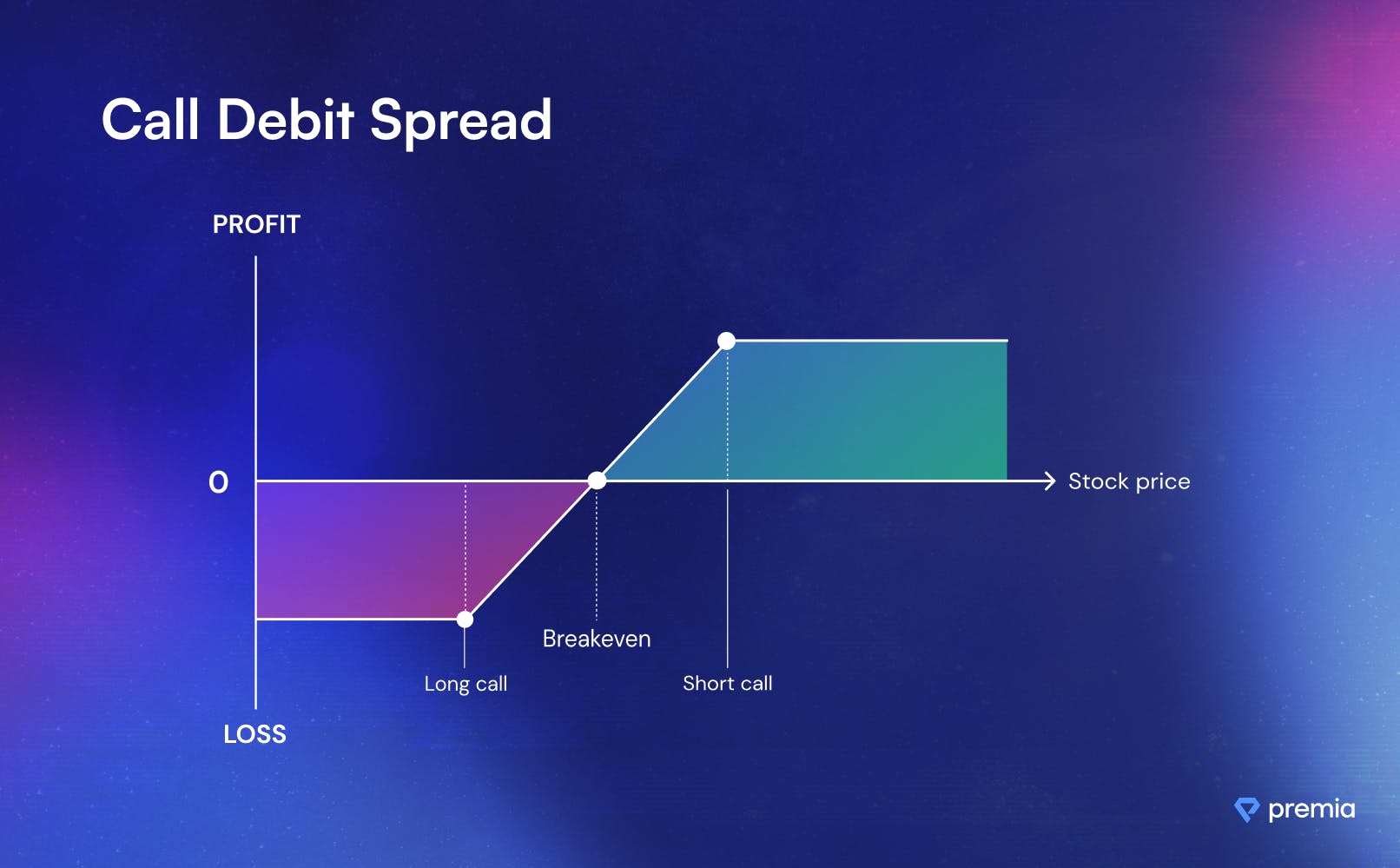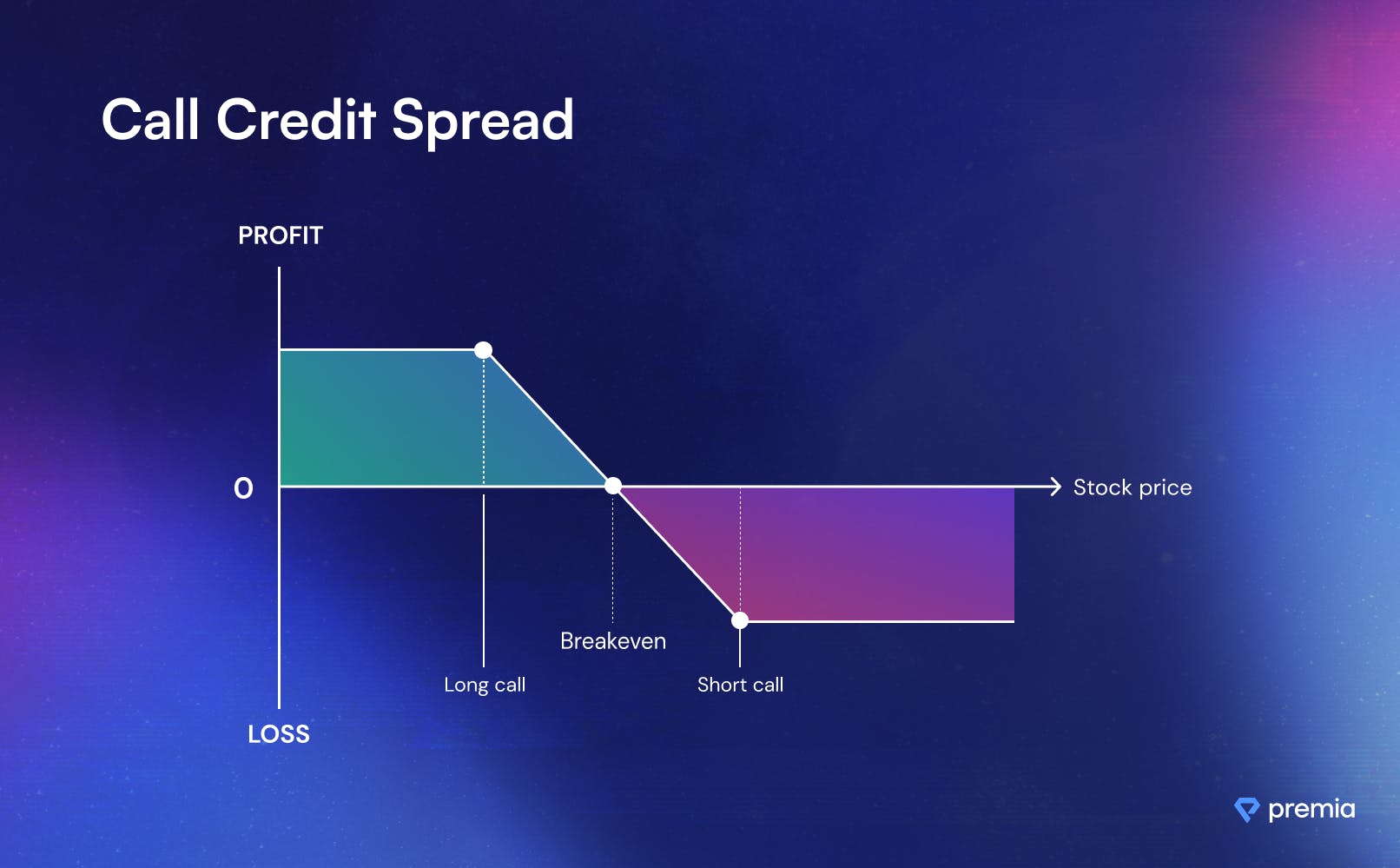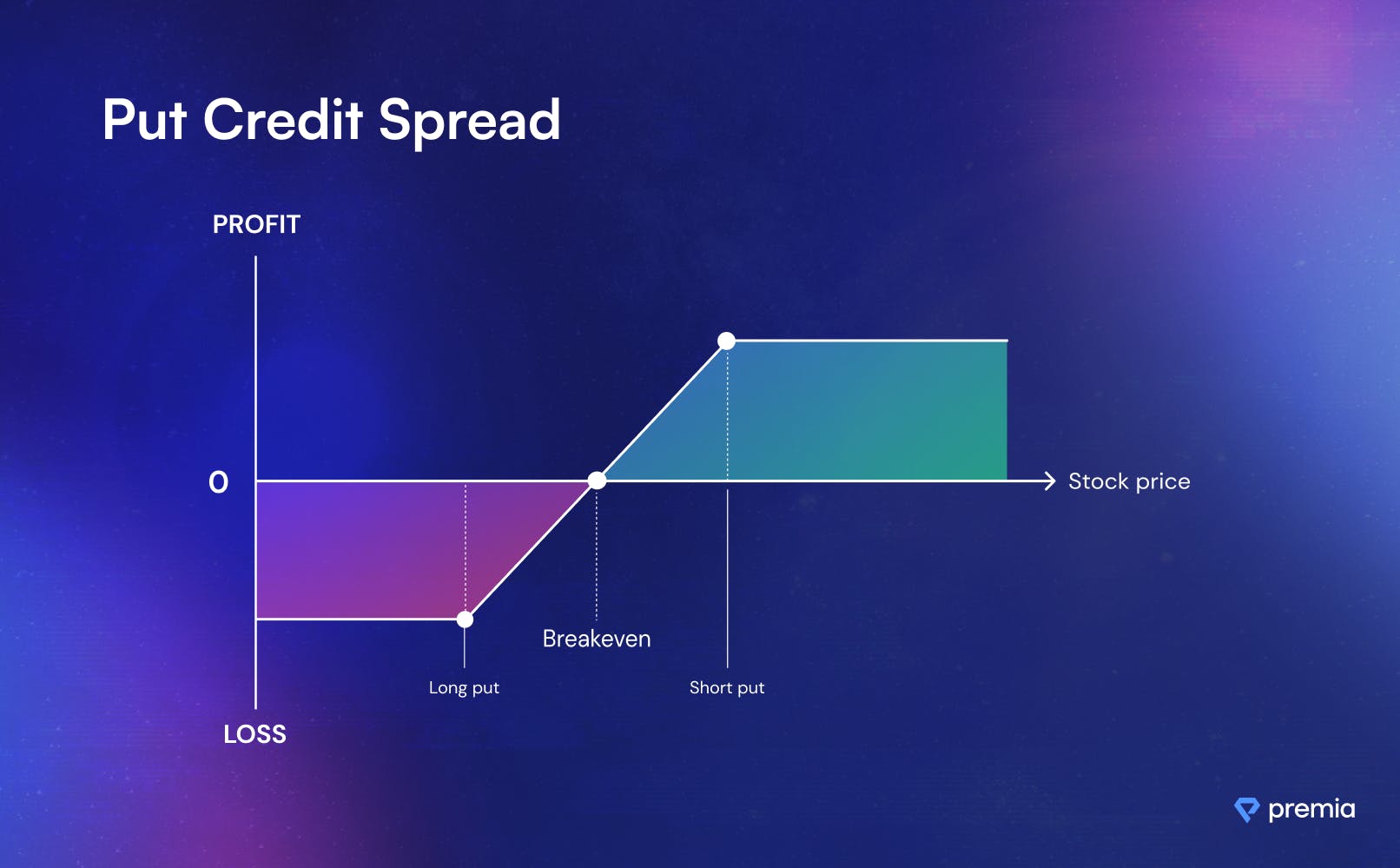
Spreads: Call & Put
💡 What is a Spread?
A spread is an options trading strategy that involves simultaneously buying and selling an option (call or put) on the same underlying asset with different strike prices. It allows traders to limit their potential losses and potential gains while capitalizing on their market outlook.
How Do Call Spreads Work?
- Buying a Call: In a call spread, the trader buys a call option with a lower strike price (referred to as the "long call") to benefit from potential price increases in the underlying asset.
- Selling a Call: Simultaneously, the trader sells a call option with a higher strike price (known as the "short call") to generate income and offset the cost of the long call.
How do Put Spreads Work?
- Buying a Put: In a put spread, the trader buys a put option with a higher strike price (referred to as the "long put") to profit from potential price declines in the underlying asset.
- Selling a Put: Simultaneously, the trader sells a put option with a lower strike price (known as the "short put") to generate income and offset the cost of the long put.
Payoffs of Option Spreads
The payoff of an option spread depends on the price of the underlying asset at expiration. Here's how it works:
Call Spreads
- Maximum Gain: The maximum gain is achieved when the underlying asset's price exceeds the higher strike price (short call) at expiration. At this point, the profit is capped at the difference between the strike prices, minus the initial cost of the spread.
- Maximum Loss: The maximum loss occurs if the underlying asset's price is below the lower strike price (long call) at expiration. The loss is limited to the initial cost of the spread.
- Breakeven Point: The breakeven point is the level at which the trader neither profits nor incurs a loss. It is calculated by adding the cost of the spread to the lower strike price.
 Call Debit Spread Payoff Graph
Call Debit Spread Payoff Graph Call Credit Spread Payoff Graph
Call Credit Spread Payoff GraphPut Spreads
- Maximum Gain: The maximum gain is achieved when the underlying asset's price is below the lower strike price (short put) at expiration. At this point, the profit is capped at the difference between the strike prices, minus the initial cost of the spread.
- Maximum Loss: The maximum loss occurs if the underlying asset's price is above the higher strike price (long put) at expiration. The loss is limited to the initial cost of the spread.
- Breakeven Point: The breakeven point is the level at which the trader neither profits nor incurs a loss. It is calculated by subtracting the cost of the spread from the higher strike price.
 Put Debit Spread Payoff Graph
Put Debit Spread Payoff Graph Put Credit Spread Payoff Graph
Put Credit Spread Payoff GraphConsiderations for Spreads
Traders should consider multiple factors when employing option spreads; risk-reward balance, cost efficiency, time decay, and market outlook. The considerations are the same for both call and put spreads.
Considerations for Call Spreads
- Risk-Reward Balance: Call spreads offer a defined risk-reward profile, allowing traders to limit their potential losses while capping their maximum gains.
- Cost Efficiency: Compared to buying a single call option, call spreads can be more cost-efficient as the income generated from selling the short call offsets the cost of the long call.
- Time Decay: Call spreads are affected by time decay, meaning the value of the options may decrease as expiration approaches. Traders should consider the impact of time decay when selecting the duration of their spreads.
- Market Outlook: Call spreads are typically used when a trader has a moderately bullish or neutral outlook on the underlying asset. They allow for potential profits even if the underlying asset's price doesn't increase significantly.
Considerations for Put Spreads
- Risk-Reward Balance: Put spreads offer a defined risk-reward profile, allowing traders to limit potential losses while capping their maximum gains.
- Cost Efficiency: Put spreads can be more cost-efficient compared to buying a single put option, as the income generated from selling the short put helps offset the cost of the long put.
- Time Decay: Put spreads are subject to time decay, meaning the value of the options may decrease as expiration approaches. Traders should consider the impact of time decay when selecting the duration of their spreads.
- Market Outlook: Put spreads are typically used when a trader has a moderately bearish or neutral outlook on the underlying asset. They allow for potential profits even if the underlying asset's price doesn't decline significantly.
Bull Spreads & Bear Spreads
Bull spreads are used when a trader has a moderately bullish outlook on the underlying asset. Oppositely, bear spreads are used with moderately bearish outlooks.
Bull Call Spread
In a bull call spread, the trader buys a call option with a lower strike price and simultaneously sells a call option with a higher strike price. The premium received from selling the higher strike call option partially offsets the cost of buying the lower strike call option. This reduces the overall cost and risk of the trade. Profits are limited to the difference between the strike prices, minus the net premium paid.
Bear Call Spread
In a bear call spread, the trader sells a call option with a lower strike price and simultaneously buys a call option with a higher strike price. The premium received from selling the lower strike call option is greater than the cost of buying the higher strike call option, resulting in a net credit. The maximum profit is the net credit received, while the risk is limited to the difference between the strike prices, minus the net credit received.
Bull Call Spread: Used when a trader has a moderately bullish outlook on the underlying asset. They expect the asset's price to rise, but not significantly.
Bear Call Spread: Used when a trader has a moderately bearish outlook on the underlying asset. They expect the asset's price to decline or remain relatively stable.
Bull Put Spread
In a bull put spread, the trader sells a put option with a higher strike price and simultaneously buys a put option with a lower strike price. The premium received from selling the higher strike put option is greater than the cost of buying the lower strike put option, resulting in a net credit. The maximum profit is the net credit received, while the risk is limited to the difference between the strike prices, minus the net credit received.
Bear Put Spread
In a bear put spread, the trader buys a put option with a higher strike price and simultaneously sells a put option with a lower strike price. The premium received from selling the lower strike put option partially offsets the cost of buying the higher strike put option. This reduces the overall cost and risk of the trade. Profits are limited to the difference between the strike prices, minus the net premium paid.
Bull Put Spread: Used when a trader has a moderately bullish outlook on the underlying asset. They expect the asset's price to rise or remain relatively stable.
Bear Put Spread: Used when a trader has a moderately bearish outlook on the underlying asset. They expect the asset's price to decline, but not significantly.
Test Yourself!
When is a Bear Call Spread used?
When a trader has a moderately bearish outlook on the underlying asset. They expect the asset's price to decline or remain relatively stable.
When a trader has an extremely bearish outlook on the underlying asset. They expect prices to fall aggressively.
When a trader has a moderately bullish outlook for an asset.